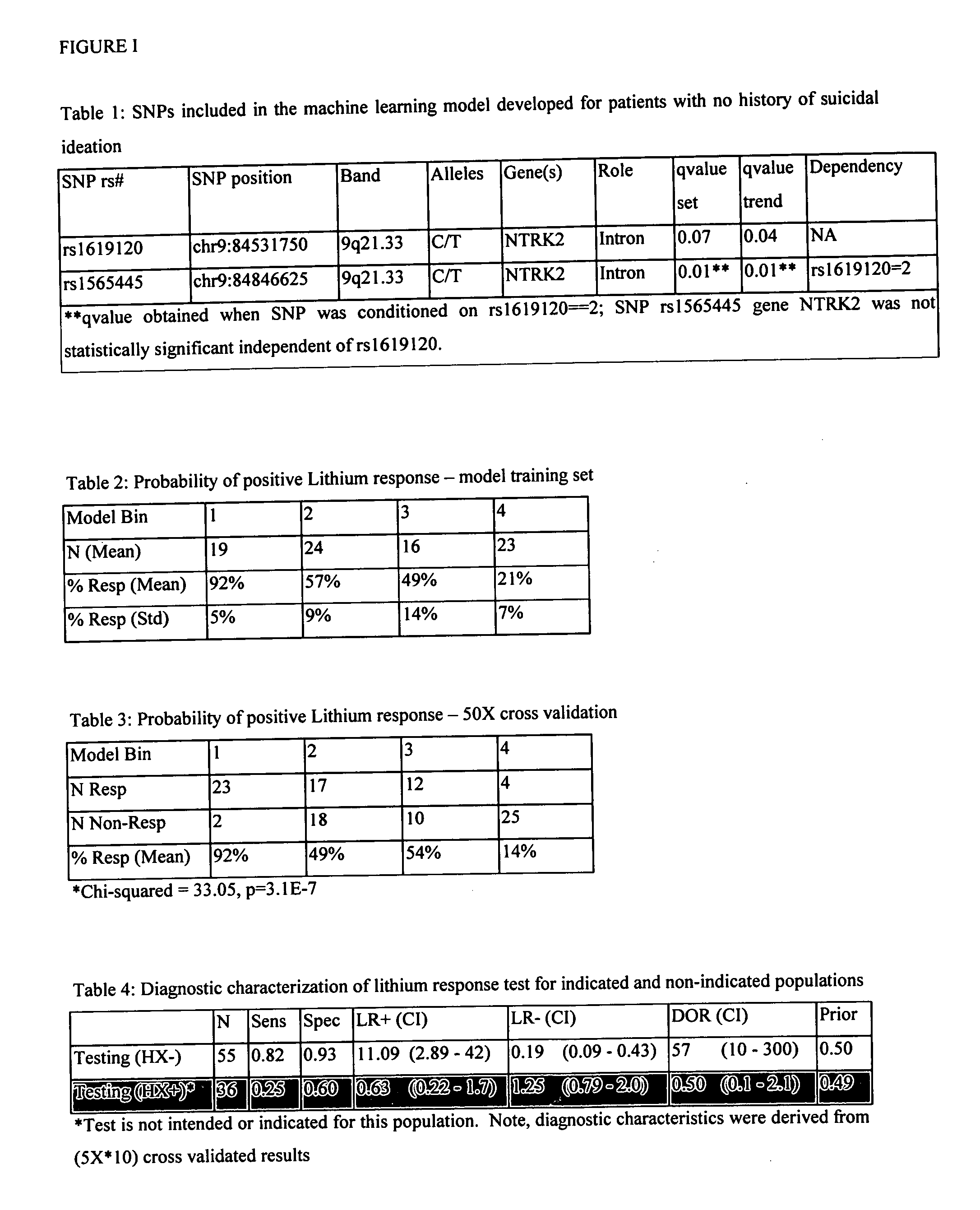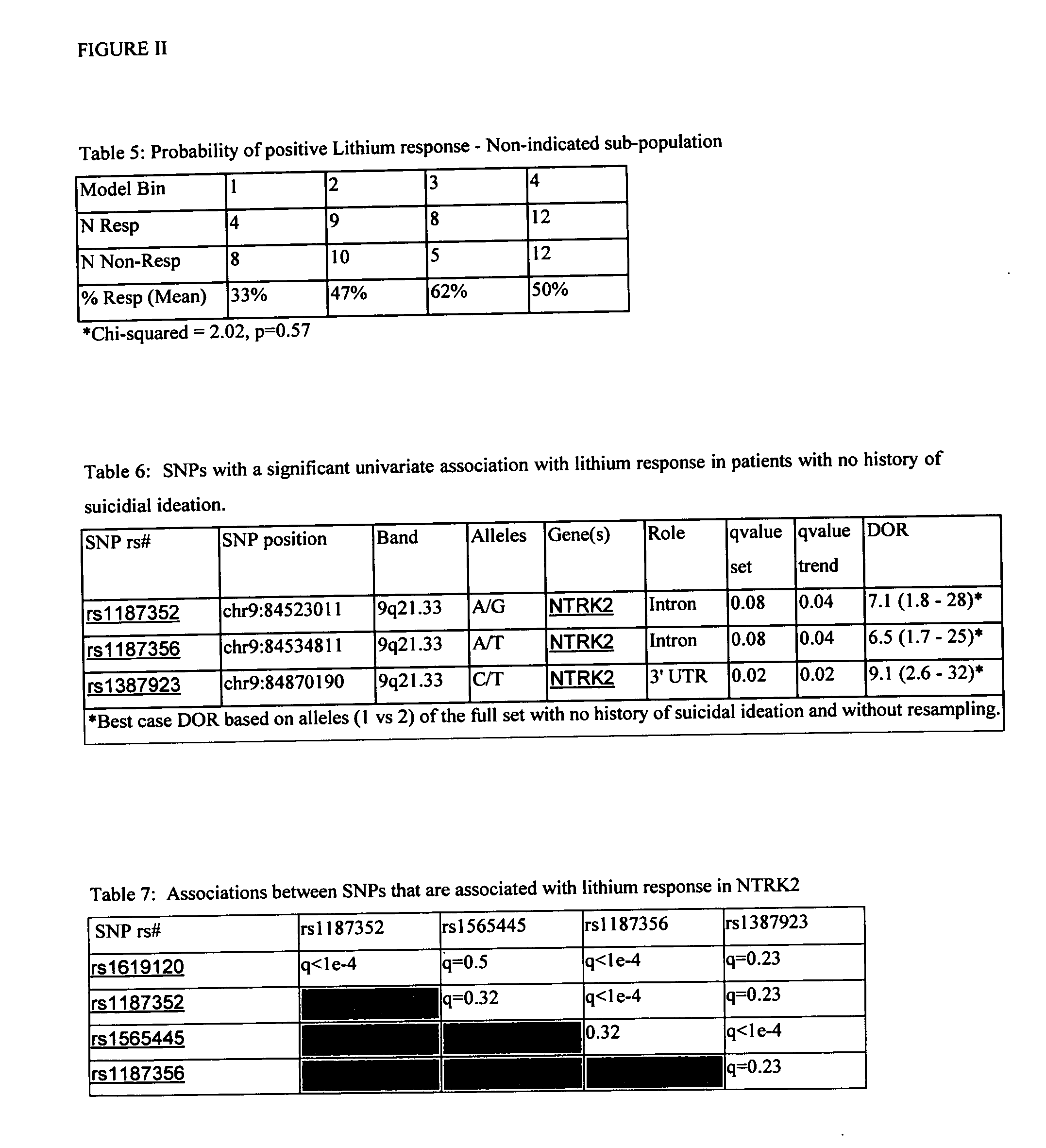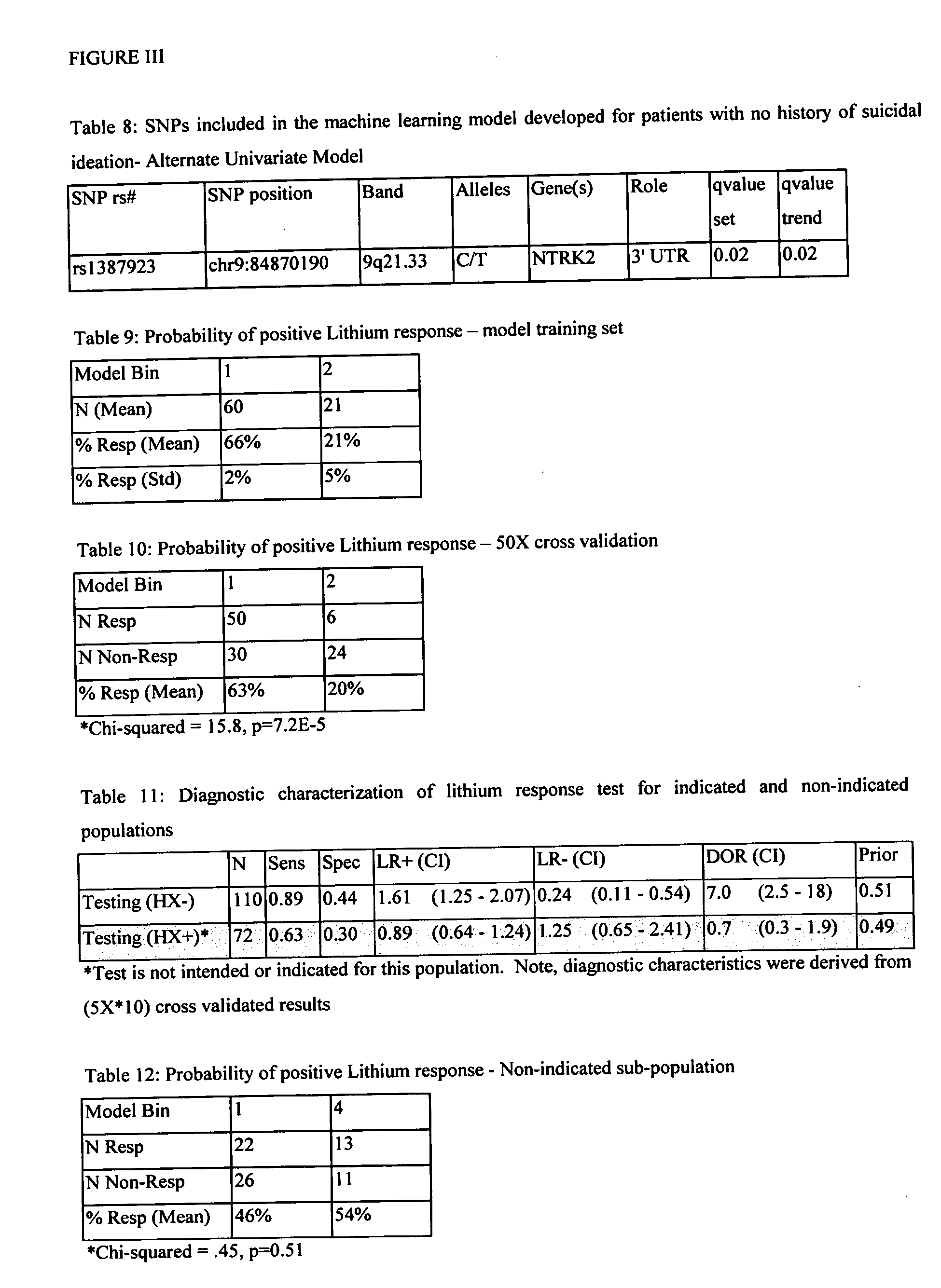Diagnostic markers of mood disorders and methods of use thereof
a mood disorder and diagnostic marker technology, applied in the field of identification and use of diagnostic markers for mood disorders, can solve the problems of delay in recovery, non-responders are unnecessarily exposed to the side effects of lithium, and patients with comorbid substances that respond relatively poorly to lithium therapy, and achieve positive or negative predictive accuracy and easy to understand
- Summary
- Abstract
- Description
- Claims
- Application Information
AI Technical Summary
Benefits of technology
Problems solved by technology
Method used
Image
Examples
example i
Bipolar Disorder Response Modeling: Lithium
[0406] Summary of Clinical Indication Dependent Genetic Lithium Response Models
[0407] Subjects:
[0408] A retrospective clinical study was completed with 184 subjects with a family history of bipolar affective disorder and a diagnosis of bipolar affective disorder. No formal cognitive, behavioral, or other psychotherapy was administered. Informed consent was obtained from all subjects after the procedure had been fully explained; subjects were unrelated and of Caucasian descent (Table 1). Eight additional co-diagnoses were also assessed: Dysphoric Mania / Mixed States, Bipolar stage, Rapid Cycling, History of Suicide, Post Traumatic Stress Disorder, Panic Attack, Panic Disorder, and Alchoholism / drug abuse.
[0409] The outcome measure for the lithium response study was a score of either strong, partial, or non-response. The measure was assessed from longitudinal patient observation for manic episodes over a period of at least 5 years. The sub...
example ii
Clinical Indication: No History of Suicidal Ideation—Multivariate Model
[0414] For the patient population with no clinical co-diagnosis of a history of suicidal ideation, two SNPs (Table 1) were selected by the decision tree method for inclusion in a model predicting lithium treatment response for bipolar affective disorder. One of the two SNPS selected by machine learning, rs1619120, was statistically significant when assessed by univariate chi-squared analysis for a trend in proportions (qFDR=0.04). The other SNP, rs1565445, while not significant in the univariate analysis was statistically significant when the SNP rs1619120 was 2 (Table 1).
[0415] The selected SNPs were in gene NTRK2, also known as TRKB, which is the receptor for brain-derived neurotrophic factor (BDNF; 113505). Together NTRK2 and BDNF regulate both short-term synaptic functions and long-term potentiation of brain synapses. The findings of recent studies indicate that suggest that the BDNF / TrkB pathway plays an ...
example iii
Clinical Indication: No History of Suicidal Ideation—Alternate Univariate Model
[0420] For the patient population with no clinical co-diagnosis of a history of suicidal ideation, a second model independent of the first was suggested (Table 1) by the decision tree method for inclusion in a model predicting lithium treatment response for bipolar affective disorder. The one SNP selected by machine learning, rs1387923 (Table 8), was statistically significant when assessed by univariate chi-squared analysis for a trend in proportions (qFDR=0.02).
[0421] The simple discriminate model based on this single SNP was able to provide a useful prediction of the probability of positive treatment outcome in the training set (Table 9). This performance was maintained within expected levels for the cross-validated results (Table 10), with an overall statistically significant result (p<0.001) for the cross-validated model performance. When comparing bin 1 to bin 2 of the predicted model response, th...
PUM
| Property | Measurement | Unit |
|---|---|---|
| Fraction | aaaaa | aaaaa |
| Fraction | aaaaa | aaaaa |
| Fraction | aaaaa | aaaaa |
Abstract
Description
Claims
Application Information
 Login to View More
Login to View More - R&D
- Intellectual Property
- Life Sciences
- Materials
- Tech Scout
- Unparalleled Data Quality
- Higher Quality Content
- 60% Fewer Hallucinations
Browse by: Latest US Patents, China's latest patents, Technical Efficacy Thesaurus, Application Domain, Technology Topic, Popular Technical Reports.
© 2025 PatSnap. All rights reserved.Legal|Privacy policy|Modern Slavery Act Transparency Statement|Sitemap|About US| Contact US: help@patsnap.com



